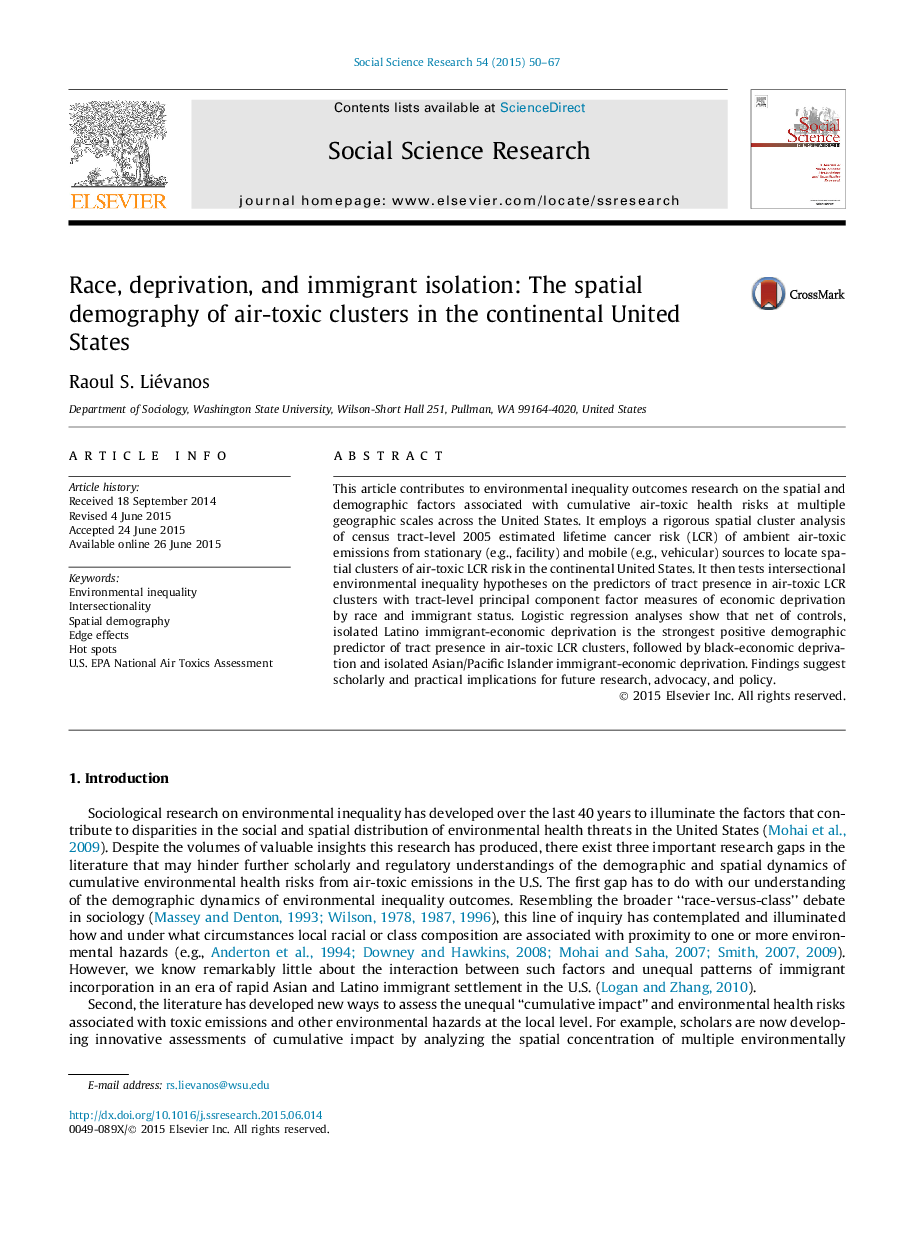| Article ID | Journal | Published Year | Pages | File Type |
|---|---|---|---|---|
| 955612 | Social Science Research | 2015 | 18 Pages |
Abstract
This article contributes to environmental inequality outcomes research on the spatial and demographic factors associated with cumulative air-toxic health risks at multiple geographic scales across the United States. It employs a rigorous spatial cluster analysis of census tract-level 2005 estimated lifetime cancer risk (LCR) of ambient air-toxic emissions from stationary (e.g., facility) and mobile (e.g., vehicular) sources to locate spatial clusters of air-toxic LCR risk in the continental United States. It then tests intersectional environmental inequality hypotheses on the predictors of tract presence in air-toxic LCR clusters with tract-level principal component factor measures of economic deprivation by race and immigrant status. Logistic regression analyses show that net of controls, isolated Latino immigrant-economic deprivation is the strongest positive demographic predictor of tract presence in air-toxic LCR clusters, followed by black-economic deprivation and isolated Asian/Pacific Islander immigrant-economic deprivation. Findings suggest scholarly and practical implications for future research, advocacy, and policy.
Related Topics
Social Sciences and Humanities
Psychology
Social Psychology
Authors
Raoul S. Liévanos,
